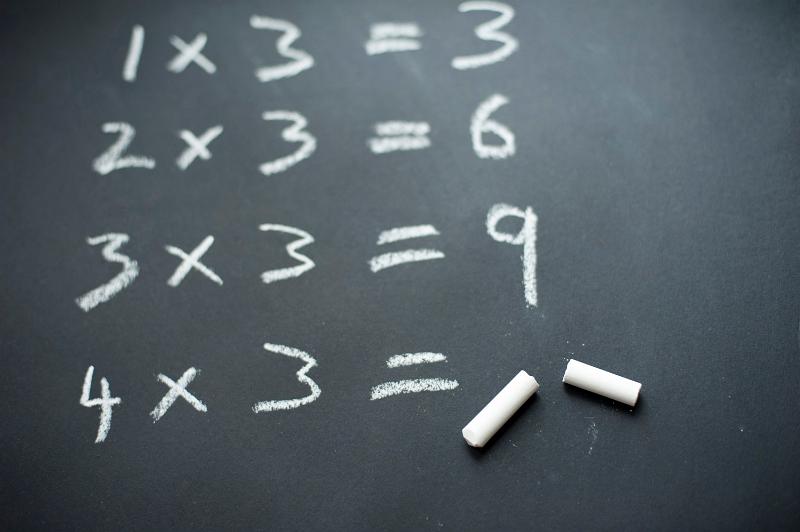Many students have difficulty learning mathematics for a variety of reasons. Not all of these students have dyscalculia. However, there are some basic areas of mathematical activity in everyday life that may indicate a dyscalculic tendency if persistently difficult and frustrating for a person. Such symptoms manifest as: mathematics anxiety and dyscalculia.
In very simple terms, analogous to dyslexia – which is dysfunction in the reception, comprehension, or production of linguistic information, dyscalculia can be defined as the dysfunction in the reception, comprehension, or production of quantitative and spatial information.
Dyscalculia is a collection of symptoms of learning disability involving the most basic aspect of arithmetical skills. On the surface, these relate to basic concepts such as: telling the time, calculating prices and handling change, and measuring and estimating things such as temperature and speed.
Dyscalculia is an individual’s difficulty in conceptualizing numbers, number relationships, outcomes of numerical operations and estimation – what to expect as an outcome of an operation. Dyscalculia manifests in a person as having difficulty:
- Mastering arithmetic facts by the traditional methods of teaching, particularly the methods involving counting.
- Dealing with exchange of money-handling a bank account, giving and receiving change, and tipping.
- Learning abstract concepts of time and direction / schedules, telling and keeping track of time, and the sequence of past and future events.
- Acquiring spatial orientation/space organisation / direction, easily disoriented (including left/right orientation), trouble reading maps, and grappling with mechanical processes.
- Learning musical concepts, following directions in sports that demand sequencing or rules, and keeping track of scores and players during games such as cards and board games.
- Following sequential directions – sequencing (including reading numbers out of sequence, substitutions, reversals, omissions and doing operations backwards), organizing detailed information, remembering specific facts and formulas for completing their mathematical calculations.
Dyscalculia can be quantitative, which is a difficulty in counting and calculating; or qualitative, which is a difficulty in the conceptualizing of mathematics processes and spatial sense; or mixed, which is the inability to integrate quantity and space.
Is a dyslexic individual likely to be dyscalculic?
A link between dyslexia and dyscalculia hasn’t been proved. The International Dyslexia Association has suggested that 60% of dyslexics have some difficulty with numbers or number relationships. Of the 40% of dyslexics who don’t have mathematics difficulties, about 11% excelled in mathematics. The remaining 29% have the same mathematical abilities as those who don’t have learning difficulties. Since some of the same prerequisite skills are involved in both language acquisition and mathematics- at least in the early learning levels – the coincidence of dyslexia and dyscalculia is not uncommon. Our observations show that about 40% of dyslexics also exhibit some symptoms of dyscalculia. However, the group of dyscalculic children/adults, like the group of dyslexics, is not a homogeneous one. Most people with dyscalculia don’t necessarily suffer from any other learning difficulty. Indeed, they may well excel in non-mathematical areas.
Is dyscalculia widely understood?
All mathematics teachers have encountered children with mathematics learning difficulties and mathematics anxiety. Most of these teachers have some awareness of the nature of learning disabilities/problems in mathematics. However, few teachers are aware of the causes of these problems – learning disabilities, mathematics anxiety, and dyscalculia. In fact, very few of them are able to recognize and deal with the problems of dyscalculics.
American Academies of Neurology and Paediatrics have identified dyscalculia as one of the neurological conditions with a cluster of syndromes associated with it. Similarly, in 2001, as part of the national Numeracy Strategy, the government published guidance for teachers to help them support dyscalculic pupils. Dyscalculia is likely to be a more familiar condition to people who specialize in learning difficulties such as special needs coordinators and educational psychologists. In the U.S., many school psychologists, neurologists and neuro-psychologists have begun to diagnose this as a condition.

Dealing with dyscalculia?
Dyscalculia is a special need, and requires diagnosis, support and special methods of teaching. The support should give the learners an understanding of their condition, and equip them with coping and learning strategies that they can use in the classroom and in their day-to-day encounters with quantity and space. Since this is a heterogeneous group no general or single intervention can be recommended.
Sourced from www.dyslexiahelp.co.uk



















An excellent article! Thank you Liz.
Thank you the article. My son was diagnosed with Dyscalculia in year 4. While he was at primary he never received support from the school. I had to pay for a tutor to help him each week. He lost a lot of confidence. There needs to be a lot more support for people with Dyscalculia.
Hi Jodie can you please advise how your son was diagnosed? Is there a specific test and where please.
Is it possible to get this article in PDF?
Hi
Is there a test for Dyscalculia?
Thank you Liz. A very helpful article that I can share.